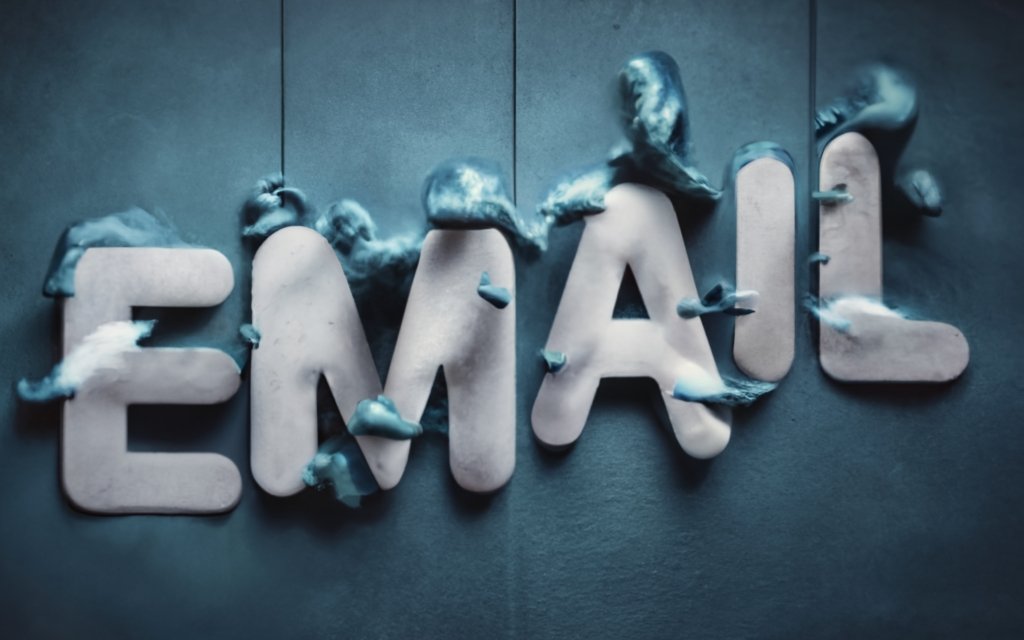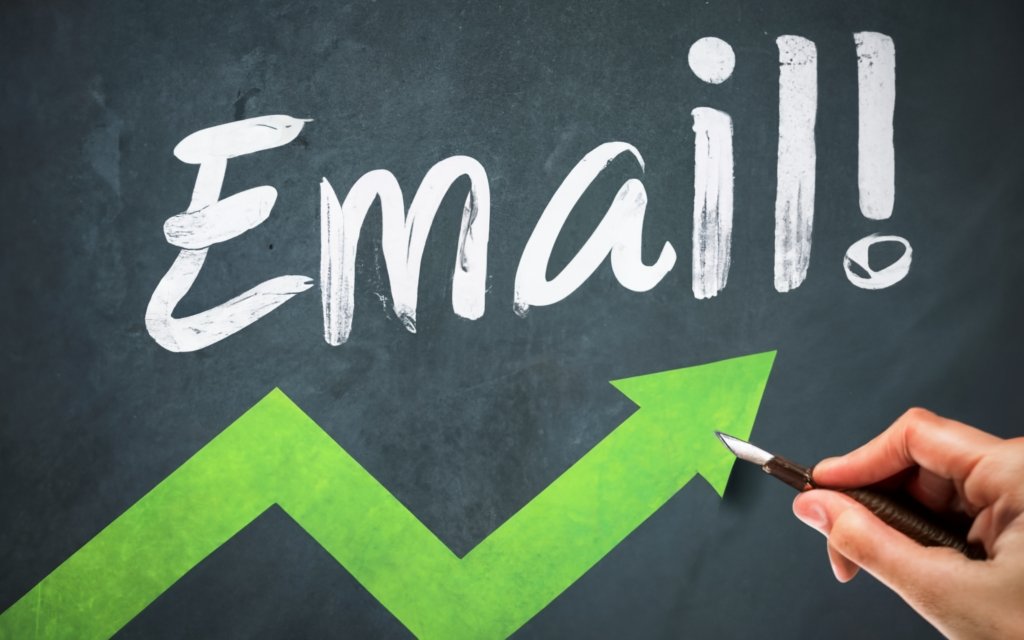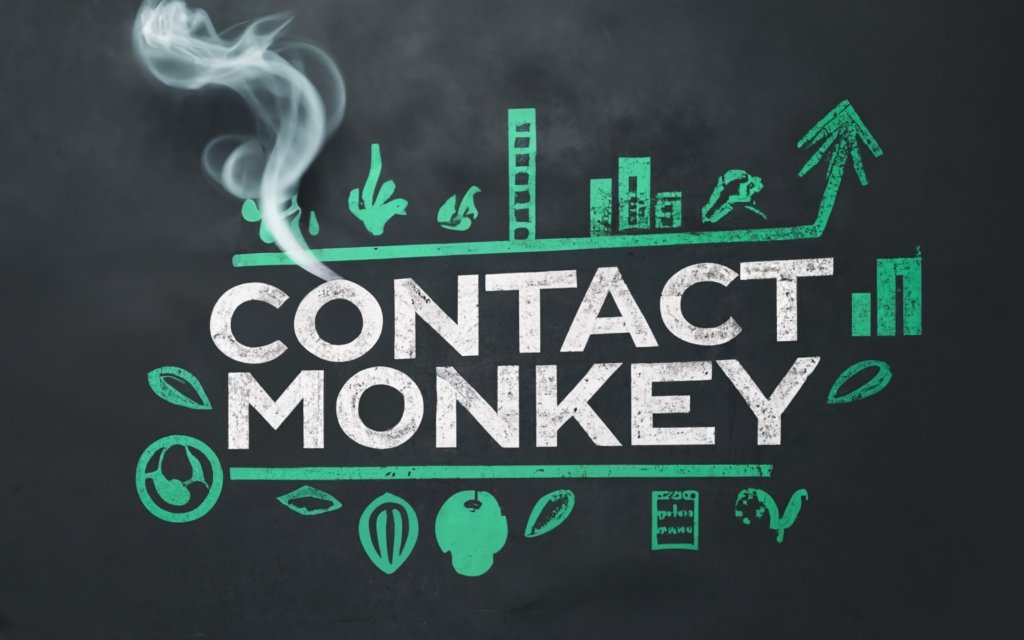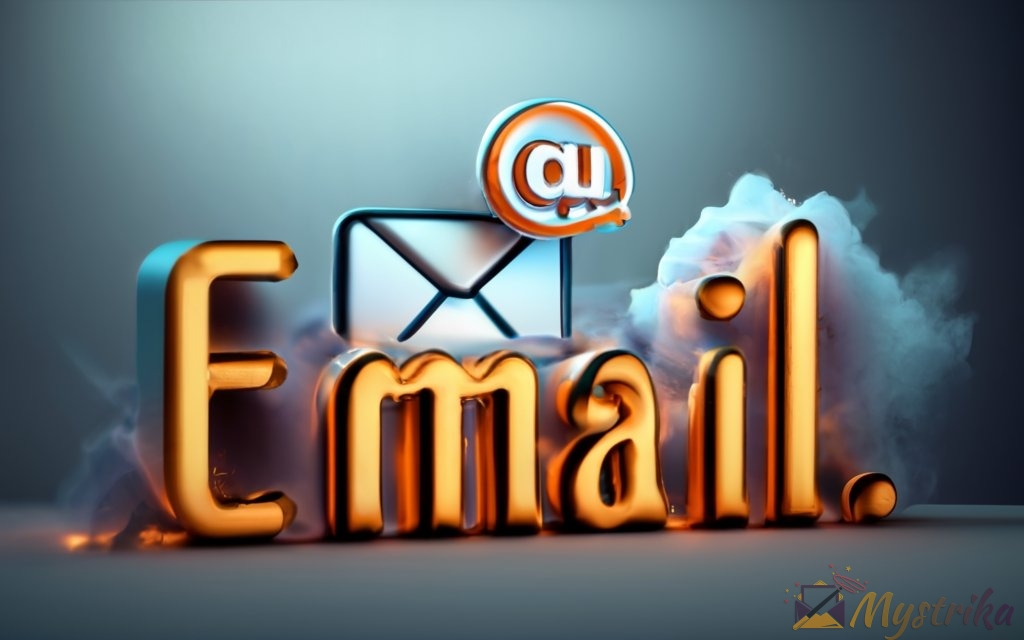Forwarded an juicy email and worried if the sender got a notification? Find out if they can see your forward with this comprehensive guide.
We lift the hood on email protocols to explain why original senders stay in the dark when you forward their messages. Learn techniques senders use to uncover forwarded emails, as well as best practices for handling forwarding ethically in business and in life. Can someone see if you forward their email? Get the inside scoop!
How Email Forwarding Works Behind the Scenes
Email may feel like a modern form of communication, but its roots stretch back decades before the first smartphone. Understanding a little history helps explain why forwarded emails remain invisible to the original sender.
A Digital Version of Mailing Letters
Long before texts, DMs, and instant messages, email emerged as an alternative to sending physical letters through the post. Early systems like ARPANET transmitted messages electronically between two connected accounts.
Email pioneers sought to replicate the asynchronous experience of letter writing. You would sit down, compose a thoughtful message, and send it off without expecting an immediate reply. The recipient would receive your email in their digital mailbox whenever they checked it.
This process mimicked paper mail right down to the forwarding. If you received a letter with information you wanted to share, you’d pass it along to a different contact by addressing and sending another envelope.
Email works the same way. When you forward a message, your email provider simply repackages its contents in a new message to someone else. The original sender has no visibility on this transfer, just as with physical mail.
One-Way Server Communication
Under the hood, the analogy to snail mail holds true. Email relies on client-server architecture, where mailbox providers (the servers) route messages between addresses.
When you hit send, your email follows a one-way trip:
- Your mail client sends the contents to your email provider’s server.
- Their server connects to the recipient’s email server via SMTP.
- The message transfers to the recipient’s mail server.
- It deposits the email into the correct mailbox.
At no point does the sender’s server communicate back to yours. For forwarding, the sequence repeats with the recipient’s server playing the sender role:
- The recipient forwards the email content to their server.
- Their server transports it to the next recipient’s server.
- The message gets stored in the new mailbox.
Again, no status updates journey back the other way. The original sender is entirely unaware their email has been forwarded on.
You’ve Got Mail, Not Postcards
Here’s another way to visualize why senders stay oblivious—think of email as sending postcards versus letters in sealed envelopes.
Postcards offer zero privacy. Anyone handling it en route can easily read your message before passing it along. The recipient could even update you by writing a reply on the back for return post.
Letters sealed in envelopes conceal their private contents from intermediaries. The sender only knows if someone received their letter if they get a new reply envelope back.
Email works like the latter. The message contents are hidden inside during transfer between mail servers. No one can “read over your shoulder.” The only way the original sender would know you forwarded their message is if you copied them on the new email.
So historically email mimicked postal mail, and under the hood servers still transfer messages one way without visibility. Understanding this helps explain why email forwarding stays private by default. The technical architecture was designed for asynchronous communication with confidentiality protections.

Why Original Senders Can’t See Forwarded Emails
Email forwarding has been built with privacy in mind from the start. Between technical limitations and privacy expectations, senders are kept in the dark when their messages get passed along to new recipients.
Email Protocols Prevent Sender Visibility
Email operates on a store-and-forward model that is designed to facilitate asynchronous, one-way communication between servers. The core protocols that govern email transmission were developed in the 1980s and 90s when bidirectional communication was more challenging.
The two main standards that enable email delivery are SMTP and POP3/IMAP:
- SMTP (Simple Mail Transfer Protocol) handles sending and routing email between mail servers.
- POP3 (Post Office Protocol 3) and IMAP (Internet Message Access Protocol) govern retrieving email from servers to your personal inbox.
Both protocols use a system of handshakes and transfers between servers to move messages to their destination. At no point does the sending server get updated on what happens to an email once delivered.
So if you forward an email, your mail server passes it along to the next server via SMTP without any way to communicate back to the original sending server. The technical architecture is designed to facilitate direct server-to-server transfers, not ongoing two-way communication.
No Status Updates by Design
In the era when these protocols were developed, maintaining persistent connections between servers was challenging. The priority was delivering messages efficiently, not tracking their status after sending.
It would have required more robust connections and computing power for sending servers to get real-time updates on forwarded emails. Such bidirectional communication didn’t fit the original design goals.
Enabling senders to monitor emails after delivery would also violate privacy expectations. Recipients want control over messages once received, including the ability to forward privately.
The technical constraints aligned with ethical considerations around appropriate server communication. Together they resulted in protocols that focused on one-way message transfers without after-the-fact updates.
Respecting Recipient Privacy
In addition to the technical limitations, allowing senders to see forwarded emails would conflict with principles of privacy and confidentiality.
Once you receive a message, it’s under your control. You can choose to delete it, save it, or pass it along as you see fit. Senders relinquish access once it hits your inbox.
Knowing a message you forwarded was visible to the original sender could have a chilling effect. People may self-censor what information they share if they knew senders could monitor forwarding.
The privacy expectations of recipients provide further justification for keeping email forwarding invisible to senders.
Will a CC or BCC See if an Email is Forwarded?
When forwarding emails, carbon copied (CC) recipients and blind carbon copied (BCC) recipients operate differently.
CC recipients are openly listed on the email header along with the To line. When you forward an email, anyone previously CCed will NOT receive the forwarded message unless manually added to the new CC or To line.
Alternatively, BCC recipients are not visible on email headers. If you BCC someone on the original email, they will remain hidden when you forward to new recipients.
So if discretion is important when forwarding an email, use BCC rather than CC to maintain secrecy.
Can Senders Track Forwarded Emails?
Despite protocols keeping senders unaware, there are ways for motivated senders to monitor email forwarding. These methods have limitations but demonstrate it is possible under certain conditions.
Email Tracking Pixels
One tactic is including a tiny tracking pixel in the email body. When images are enabled, opening the email loads the external pixel, alerting the sender of the open.
If that recipient forwards the email, the tracking pixel also loads for the new recipient, indicating the forward. However, many email clients block external image loading by default, limiting pixel tracking.
Email Tracking Services
Services like MailTracking and Streak use tracking pixels along with technology like logo caching and link tagging to detect email forwarding even if images aren’t loaded.
However, forwarding often strips out much of these tracking elements, only notifying the sender if the original copy is forwarded intact. Savvy recipients can still avoid detection by altering forwarded emails.
Informing Senders Directly
The only guaranteed way senders can know their email was forwarded is if the recipient explicitly tells them. Whether intentionally or accidentally, being directly included on or informed of a forward provides sender visibility.
Short of this disclosure, most methods for tracking email forwarding have significant limitations. While possible under ideal conditions, technical protocols and privacy expectations keep this visibility uncommon.
Email Tracking with Services Like ContactMonkey
For marketers and sales teams wanting more visibility into how recipients engage with emails, third-party tracking tools like ContactMonkey offer useful options.
ContactMonkey integrates with major email providers to track opens, clicks, forwards, and more. Some key features related to email forwarding include:
- Forward tracking: Alerts when an email you sent gets forwarded to another address.
- Recipient details: Identifies who received the forward by name and email address when available.
- Location tracking: Collects approximate geo-location on opens and forwards.
- Link clicking: Detects which links are clicked after an email is forwarded.
While these can provide business intelligence, ethical concerns remain around third-party tracking of private communications without full consent. There are benefits, but also substantial privacy tradeoffs.
The core email protocols prevent sender visibility by design, but additional tracking methods demonstrate blind spots exist. In the end, the onus falls on recipients to selectively forward emails in a way that maintains their preferred level of confidentiality.

When Might a Sender Discover an Email Was Forwarded?
While email protocols keep senders in the dark, there are still ways a forwarded email could become known. Accidental reveals, subtle clues, and ethical handling allow senders to occasionally learn their emails were forwarded.
Accidental Inclusion on Forwards
The most direct way a sender discovers their email was forwarded is if they somehow get included on the new distribution.
This could happen by mistake if the sender is left on the To or CC line when forwarding. Or the sender could be unintentionally BCCed on the forward by a sloppy recipient.
In any case, a sender receiving their original message unexpectedly in their inbox signals that the email was forwarded on without removing them.
Of course, once made aware of the mistake, ethical senders should delete rather than read the content. But the inadvertent inclusion proves that a forward occurred.
Discussing Confidential Contents
If confidential details from a private email get revealed to a sender through other channels, that suggests it was forwarded.
For example, if you emailed Person A some sensitive information about Person B, and Person B later mentions those details to Person A, it’s likely Person A forwarded the message against your wishes.
The sender can surmise their email was forwarded if private contents only known by reviewing the message get disclosed through other means.
Mentioned by Other Recipients
Alternatively, the sender could learn an email was forwarded if a third-party who received it mentions that fact.
For example, Person A sends an email to Person B, who then forwards it to Person C. If Person C later tells Person A “I got your email from Person B,” that clearly alerts Person A that their message was forwarded without their knowledge.
Once again, an ethical sender should be careful not to pry for more details upon learning this. But being directly informed of a forward by a downstream recipient confirms it occurred.
Guessing an Email Was Forwarded Based on Indirect Clues
Even without definite confirmation, there are subtle signs that may suggest an email was forwarded. Senders can make educated guesses but should avoid accusations without evidence.
Sudden Interest from Unexpected Parties
If the sender receives inquiries or comments from people unrelated to the original distribution, that hints at a forward.
For example, if Person A sends an email only to Person B, but then gets contacted by Persons C, D and E about the contents, it’s reasonable to deduce Person B forwarded the message.
The sender can’t be certain, but the circumstantial evidence points to an undisclosed forwarding.
Mentions of Private Information
Another clue is if unknown parties reference private details from a one-on-one email without explaining how they learned of them.
For instance, if Person A emails Person B about a confidential company matter, and then Person C asks Person A about it while indicating familiarity, Person B likely forwarded the message to Person C.
Again it’s not definitive proof, but provides justification for suspicion.
Shift in Tone or Style of Communication
Noticing that the style of communication and tone has changed when discussing a topic previously shared by email can also imply a forward.
If Person A emails Person B about an issue professionally, but then Person B brings it up to Person A casually, that tonal shift raises questions.
It suggests Person B may have forwarded the sober email to a personal contact like a spouse or friend, who in turn discussed it with Person A in relaxed chit-chat.
The change in tone from formal to informal hints the message left its original audience.
Handling Suspected Email Forwarding Gracefully
If these clues convince a sender their private email was forwarded, it’s essential to handle the situation with discretion and ethics.
Afew best practices include:
- Don’t confront suspected forwarders with accusations without proof. Seek clarification gently by asking if anyone else was included in a particular communication.
- If confirmed, first understand why it was forwarded before expressing anger or disappointment. There may be reasonable explanations.
- Establish group norms upfront around sharing of emails, especially for private communications. Make clear if consent is required.
- Focus the conversation on preventing future issues. Use it as a teaching moment rather than for shame.
With tact and care, senders can inquire about suspected forwarded emails while maintaining trust. Establishing confidentiality expectations and respecting privacy remains vital even when protocols fail.

How to Limit Forwarding of Sensitive Information
While you can’t completely prevent email forwarding, there are tactics senders can use to limit the spread of confidential or private information via forwarded messages.
Use BCC for Mass Emails with Sensitive Details
If you need to send an email containing sensitive details to multiple recipients, put the addresses in BCC rather than To or CC.
BCC hides all recipient identities from each other. This prevents any single recipient from forwarding to others visibly included.
For example, if emailing 20 people a message with sensitive legal information relevant to all, BCC the 20 addresses individually. This hides the full distribution list from any given recipient.
Even if one person forwards the email, the new recipient won’t see the 19 other addresses to send it to as well. BCC limits the spread.
Watermark Confidential Documents
Another precaution is digitally watermarking or adding tracking metadata to attached documents with sensitive information before attaching them to emails.
This allows you to trace document copies back to the original in case of unauthorized forwarding.
For example, prior to emailing a confidential contract, you could use Adobe Acrobat to embed watermarked identification codes in the PDF metadata. If that version gets forwarded and spreads, you can confirm which recipient broke trust based on the coded ID.
Request Confidentiality for Sensitive Content
If you must include extremely confidential content in an email, clearly communicate to the recipient that forwarding would violate your trust.
Politely but firmly state that the information is for their eyes only and not to be shared without your explicit authorization. This sets expectations.
You could also have recipients sign non-disclosure agreements about not forwarding sensitive emails regarding particular matters like mergers & acquisitions or patient health data.
Making clear the expectation, severity and consequences around unauthorized forwarding helps minimize unnecessary leaks. Just be sure such warnings are legally reviewed first.
When Forwarding Emails Is Acceptable
There are also cases where forwarding emails without the sender’s knowledge is morally acceptable. Context matters.
Public Business Correspondence Without Personal Details
Any generic business communications without sensitive details or confidential materials can ethically be forwarded as needed.
For example, forwarding a promotional email about a product or event generally doesn’t require consent. The sender intends wide distribution, so passing it along likely aligns with intentions.
Forwarding Relevant Information to Close Contacts
Sharing key information from non-confidential emails with close family or personal contacts as relevant is usually fine.
For instance, forwarding an email about school schedule changes to a spouse so they know to pick up the kids is reasonable. Or sharing product alerts about dangerous recalls with friends for safety is justified.
Redistributing Content After Getting the Sender’s Consent
Any email can be forwarded with a clear conscience if you confirm the sender approves of redistribution. Ask for permission to share if unsure.
For example, if you receive a great recipe from a friend, it’s courteous to say “This looks delicious! Would it be alright if I forward this to a few foodie friends to enjoy too?”
Best Practices for Keeping Email Content Private
If hoping to restrict forwarding about a particular topic, there are some best practices to keep email content extra confidential:
- Use email services like Paperflite that allow message recall or unsending after delivery. This lets you pull back mistakenly forwarded messages before they spread too far.
- Avoid communicating personal details or anything controversial that someone may feel compelled to share against your wishes. The more provocative the content, the likelier it gets forwarded.
- For ultra sensitive discussions, use end-to-end encryption services like ProtonMail rather than standard email providers. This protects content from being leaked through forwarding due to decryption.
While no email is ever 100% safe from unauthorized forwarding, prudent senders can take steps to encourage recipients to keep their correspondence private. But ultimately, trust in those you email remains essential.

Email Forwarding Etiquette in Professional Settings
Workplace environments come with their own nuances when handling email forwarding. Honoring organizational norms and obtaining consent helps maintain professionalism.
Following Organizational Email Sharing Norms
Most businesses and organizations have established cultural norms around sharing internal communications with discretion.
Forwarding work emails to external personal contacts should be avoided without permission. And even internal forwarding should be done judiciously.
Always pause to consider whether the sender would welcome their email being forwarded before clicking Send. When in doubt, seek their approval first.
For example, internal meeting invites, department announcements and team project updates likely weren’t intended for audiences beyond employees. Casually forwarding them outside the organization could be seen as careless.
Err on the side of caution by clarifying what emails are appropriate to share externally versus meant to remain internal. And only pass along the latter with consent.
Avoiding Breaches of Trust Through Over-Forwarding
Just because an email can technically be forwarded unseen doesn’t mean you should. Restraint prevents needlessly harming work relationships.
Indiscriminately forwarding emails co-workers sent you can damage hard-won trust. Even if policy allows it, excessive forwarding can make colleagues hesitate to communicate openly with you.
Think carefully before forwarding emails from co-workers to others in the organization. Do so only when the additional recipients will provide constructive help toward shared goals.
And never forward as an excuse to mock or take out of context what colleagues share with you. That amounts to workplace bullying and abuse of trust.
Establishing Explicit Forwarding Consent Policies
To curb unfettered internal forwarding issues, some organizations implement explicit forwarding consent policies.
These rules require senders to clarify emails as “Confidential: Not to be forwarded without permission” or similar language indicating consent is mandatory.
Recipients must then get the sender’s go-ahead in writing before forwarding restricted emails, even within the organization.
This removes ambiguity by forcing recipients to proactively confirm a sender’s preferences around sharing their messages.
Of course, such policies still rely on recipients to honor them. But they provide helpful guidance and accountability.
Navigating Forwarding with External Contacts
Sharing emails from external business contacts poses further etiquette challenges.
Being Selective When Forwarding Third-Party Correspondence
Resist forwarding any email from an external contact unless you have a compelling reason. Each should be evaluated case-by-case.
For example, a vendor quote for comparison shopping could justify a forward. But their promotional newsletter almost certainly shouldn’t be.
Take context and relationship impact into account. Err on the side of asking first unless certain the sender would approve.
Seeking Approval Prior to Sharing Externally
When unsure if forwarding an external email would be welcome, politely ask the sender for permission first.
A simple note explaining why you want to share the message with X and asking if they’d be comfortable with that goes a long way.
Giving the sender control upfront strengthens trust. It also avoids unintended political complications across organizations.
Considering Implications for Relationship Management
Finally, weigh whether forwarding an external email could complicate business relationships before doing so.
If the sender and prospective forward recipient are competitors or have regulatory power over each other, it’s smart to reconsider.
Forwarding between parties in an ambiguous or contentious relationship should be handled delicately, if at all. Tread carefully.
With thoughtfulness and discretion, professional email forwarding can be executed smoothly. Put yourself in the sender’s shoes, seek consent when unsure, and you’ll maintain strong networking ties.
Monitoring Forwarded Emails with Services like ContactMonkey
For teams that rely heavily on email outreach, tracking tools like ContactMonkey provide useful visibility – but also raise ethical considerations around consent and privacy.
Email Tracking for Business Development
Services like ContactMonkey enable sales, marketing, recruiting and other teams that email prospects to monitor how recipients engage with their messages.
Forward tracking is one feature they offer. Others include:
- Open & click tracking to see who opened emails and what links got clicked.
- Activity time tracking to identify optimal days and times for outreach.
- Email reporting for data like open rates, response times and contact interactions.
These tools integrate with email providers to give senders insights that optimize campaigns.
For example, a recruiter could use forwarding alerts to see which hiring managers pass job descriptions to their teams. Then they can follow up with those key decision makers directly.
Powerful Forwarding Monitoring Capabilities
Here are some specific ways ContactMonkey and similar tools monitor email forwarding for senders:
- Forward notifications immediately alert when an email you sent gets forwarded.
- Recipient analysis identifies who received the forward by name and email address when possible.
- Location tracking shows approximate geo data on where emails were opened and forwarded.
- Link forwarding detects if your email links get clicked after being forwarded to new recipients.
- Email text preservation attempts to track if your original email text is preserved or if the forwarding notice modifies it.
This amount of visibility into recipients’ engagement can significantly optimize email campaigns when applied strategically.
Weighing Value Against Ethical Considerations
However powerful email tracking tools are, legitimate privacy issues around monitoring without consent do exist.
There are risks of contacting recipients who forwarded emails without realizing they were tracked, which could feel invasive.
Ideally services like ContactMonkey would enhance transparency by:
Respecting Recipient Privacy with Email Tracking
If email tracking services better respected people’s preferences, the value would outweigh the risks for most.
Disclosing Tracking Usage and Offering Opt-Out
They should disclose upfront in emails that they use voluntary tracking tools.
An easy opt-out could exempt recipients from monitoring if they desire more privacy.
Aggregating Data and Avoiding Individual Tracking
The tools could also report analytics in aggregate without identifying individuals. This maintains useful metrics without intrusion.
Using Tracking Strictly for Business Intelligence
Senders should pledge to only apply insights from tracking services for general business intelligence like improving email effectiveness.
Monitoring should never be used punitively against individual recipients or to pressure them.
With consent, transparency and accountability, email tracking tools offer major advantages. But companies relying on them should take steps to uphold high privacy standards.

Key Takeaways on Email Forwarding and Sender Visibility
Understanding the origins and limitations of email can explain why forwarded messages stay private. With ethical judgment, senders and recipients can maintain trust despite protocols allowing secrecy.
The Mechanics of Email Forwarding
Email was designed to emulate old-fashioned postal mail, allowing asynchronous sending of messages between servers.
Once a sender transmits an email, there is no further communication back to their server. Their message is simply transported to the recipient’s inbox.
Forwarding works by the recipient’s mail server sending the message again to a new contact. The original sender’s server remains unaware.
So technically emails function as one-way transactions. Senders relinquish access and visibility when in transit and upon delivery.
Default Sender Blindness to Forwards
Due to this one-way server communication, the original sender cannot inherently see if an email they sent was forwarded to someone else.
Their vantage point ends once their message reaches the initial recipient’s inbox. What happens next is outside their view.
Of course, recipients could voluntarily include senders when forwarding. Or the sender may eventually hear about a forward through other channels.
But inherently through the email protocols themselves, senders are blind to emails being forwarded without consent or awareness.
Handling Communications Ethically
Despite this blindness, both senders and recipients should handle email forwarding thoughtfully and ethically.
Recipients should minimize sharing truly confidential data meant only for their eyes initially. Seeking consent first is ideal when possible.
Likewise, if learn a private email was forwarded, senders should first reflect on why rather than reacting with anger.
With care and wisdom, all parties can uphold trust and respect. Technical protocols may enable secrecy, but human judgment ensures diplomacy.
Core Principles for Email Forwarding Etiquette
To sum up key ideas around handling email forwarding ethically:
- Forward judiciously, only when benefits outweigh privacy risks. Seek consent when feasible.
- If informed an email was forwarded, inquire gently without accusations if clarification needed.
- If asked, share forwarding policies and preferences clearly and respectfully.
- Set organizational email sharing norms thoughtfully, not by default permissions.
- Consider implications for business relationships before external forwarding.
- Use tracking thoughtfully, with transparency, aggregate data, and opt-out options.
With sound moral compasses, senders and recipients together play vital roles stewarding email forwarding for good.
Key Takeaways on Email Forwarding and Sender Visibility
- Email was designed to emulate postal mail, with servers routing one-way messages between addresses without ongoing bidirectional communication.
- This technical architecture results in the original sender being unable to see if an email they sent was forwarded by the recipient to someone else.
- While limitations exist, motivated senders can sometimes monitor forwarding through tracking pixels, email services, or being informed directly by recipients. However, protocols keep forwarding invisible by default.
- Beyond technical reasons, principles of privacy also support keeping email forwarding hidden from original senders, as recipients have a reasonable expectation of control and confidentiality once a message lands in their inbox.
- If a sender discovers an email was forwarded, either by accident or through investigation, they should thoughtfully reflect on context before reacting, and have a constructive discussion aligned with ethical business norms.
- Both senders and recipients should aim to maintain trust when handling email forwarding by being selective about what is shared, seeking consent when appropriate, and establishing clear policies around permissions.
- Services like ContactMonkey provide useful visibility into email engagement like forwarding, but also raise privacy concerns that companies should carefully weigh and mitigate through transparency, aggregate data usage, and consent.
- With sound moral judgment guiding decisions more than mere technical capabilities, senders and recipients can together ensure email forwarding powers positive communication while minimizing risks of violating privacy or eroding relationships.
Frequently Asked Questions About Email Forwarding
Can the original sender see if I forward their email?
No, the original sender cannot see if you forward their email. Email protocols are designed to only transfer messages one-way without ongoing back-and-forth communication between servers.
Can someone see if I forward their email?
No, email recipients cannot inherently see if you forward their message to someone else. The technical architecture of email does not provide visibility to the original sender if their email gets forwarded.
Can I get in trouble for forwarding an email?
You could get in trouble legally or ethically for forwarding private emails without permission, especially if confidential information is shared. Always exercise good judgment on what emails are appropriate to forward versus keep private.
Is it illegal to forward someone’s email?
There is no universal law making it illegal to forward emails in all cases. But in contexts like healthcare or legal matters, sharing privileged information through unauthorized forwarding can violate laws like HIPAA or attorney-client privilege.
Can email tracking see if I forward an email?
Yes, services like ContactMonkey use methods like tracking pixels to detect when an email has been forwarded and gather details about the recipients. However, limitations exist and not all forwarding gets detected.
Do business emails notify the sender if forwarded?
No, most business email services do not automatically notify the sender if an email gets forwarded. However, businesses may use email tracking services to monitor forwarding. Policies may also prohibit forwarding emails without permission.
Can I get in trouble for forwarding work emails?
You could face disciplinary action for forwarding internal work communications without permission, as it may violate company policies around confidentiality, trust, and appropriate workplace communication.
Is it illegal to forward an email from someone else?
There is no blanket law, but forwarding private emails involving confidential information, proprietary data, or privileged relationships without consent could violate laws in contexts like healthcare, law, finance, etc.
Can I recall an email if forwarded?
Most email services do not let you recall or undo email forwarding if the recipient has already read and forwarded your message. However, some paid services like Paperflite enable recalling emails before opened.
Can I prevent someone from forwarding my email?
There is no absolute way to prevent email forwarding, but you can request confidentiality, avoid sending sensitive data, use tracking services, or utilize platforms with recall options to discourage and monitor unauthorized forwarding.

